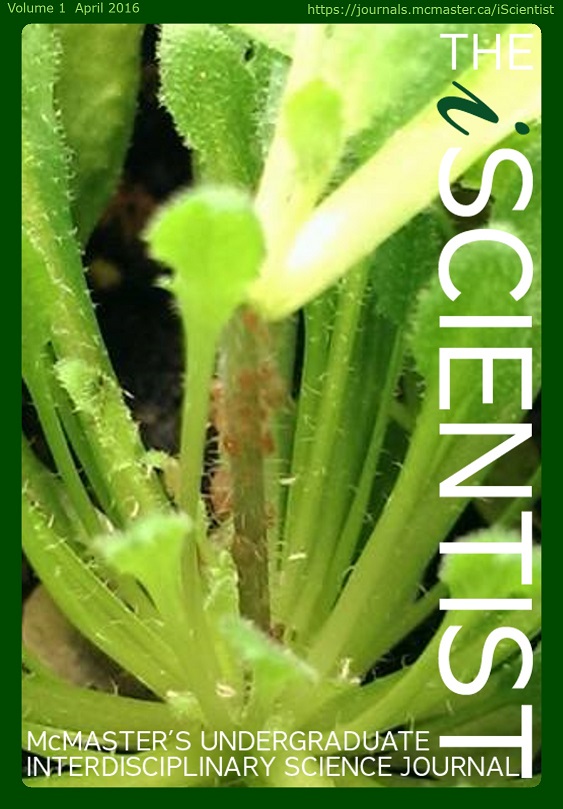Calcium Availability and the Interaction of Arabidopsis thaliana and Myzus persicae
Keywords:
Calcium, Arabidopsis thaliana, Myzus persicae, callose deposition, resource availability theory, micronutrient availabilityAbstract
The reciprocity inherent to plant-animal interactions allows these ecological systems to be influenced by a variety of external factors. Nutrient availability in soil is an important and extremely sensitive variable in the determination of successful plant performance. In particular, calcium is a macromineral that plays a role in both plant growth and facultative defence. Increased cytosolic calcium concentrations are correlated with an increase in callose deposition, a defence mechanism against piercing-sucking herbivores. In this experiment, we moderated the amount of calcium available to Arabidopsis thaliana samples, and assessed both direct effects on plant performance and indirect effects on the Myzus persicae populations that resided on the plants. Half of the plants in this study were inoculated with viviparous aphids, and all plants were treated with varying amounts of dolomitic limestone throughout the experimental timeline. Plant performance and aphid fecundity was evaluated through measures of aphid count, new leaf growth, old leaf growth, and plant height. A two-way analysis of variance was used to analyze the interactive effect of calcium treatment and time on the total number of aphids and the interactive effect of day and block on new leaf growth. In general, calcium treatment was shown to negatively affect aphid population growth. Plants inoculated with aphids performed more poorly over time than plants that were not inoculated. The results of this experiment indicate a relationship between aphid population growth and soil calcium levels. This overall negative trend could be explained by resource availability theory. Further studies of this interdependence would indicate the ways in which human manipulation of the environment can have effects that propagate across many trophic levels.
Downloads
Published
Issue
Section
License
Authors who publish with this journal agree to the following terms:- Authors retain copyright and grant the journal right of first publication with the work simultaneously licensed under a Creative Commons Attribution License that allows others to share the work with an acknowledgement of the work's authorship and initial publication in this journal.
- Authors are able to enter into separate, additional contractual arrangements for the non-exclusive distribution of the journal's published version of the work (e.g., post it to an institutional repository or publish it in a book), with an acknowledgement of its initial publication in this journal.
- Authors are permitted and encouraged to post their work online (e.g., in institutional repositories or on their website) prior to and during the submission process, as it can lead to productive exchanges, as well as earlier and greater citation of published work (See The Effect of Open Access).


